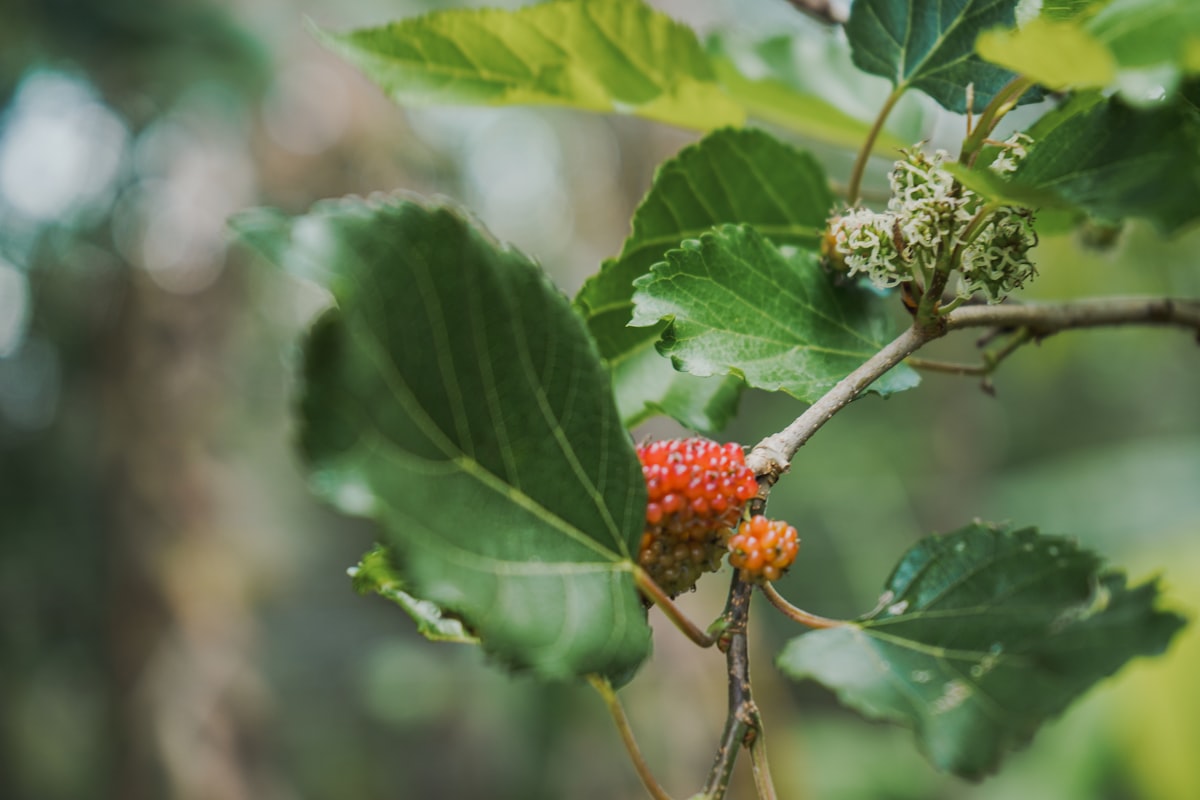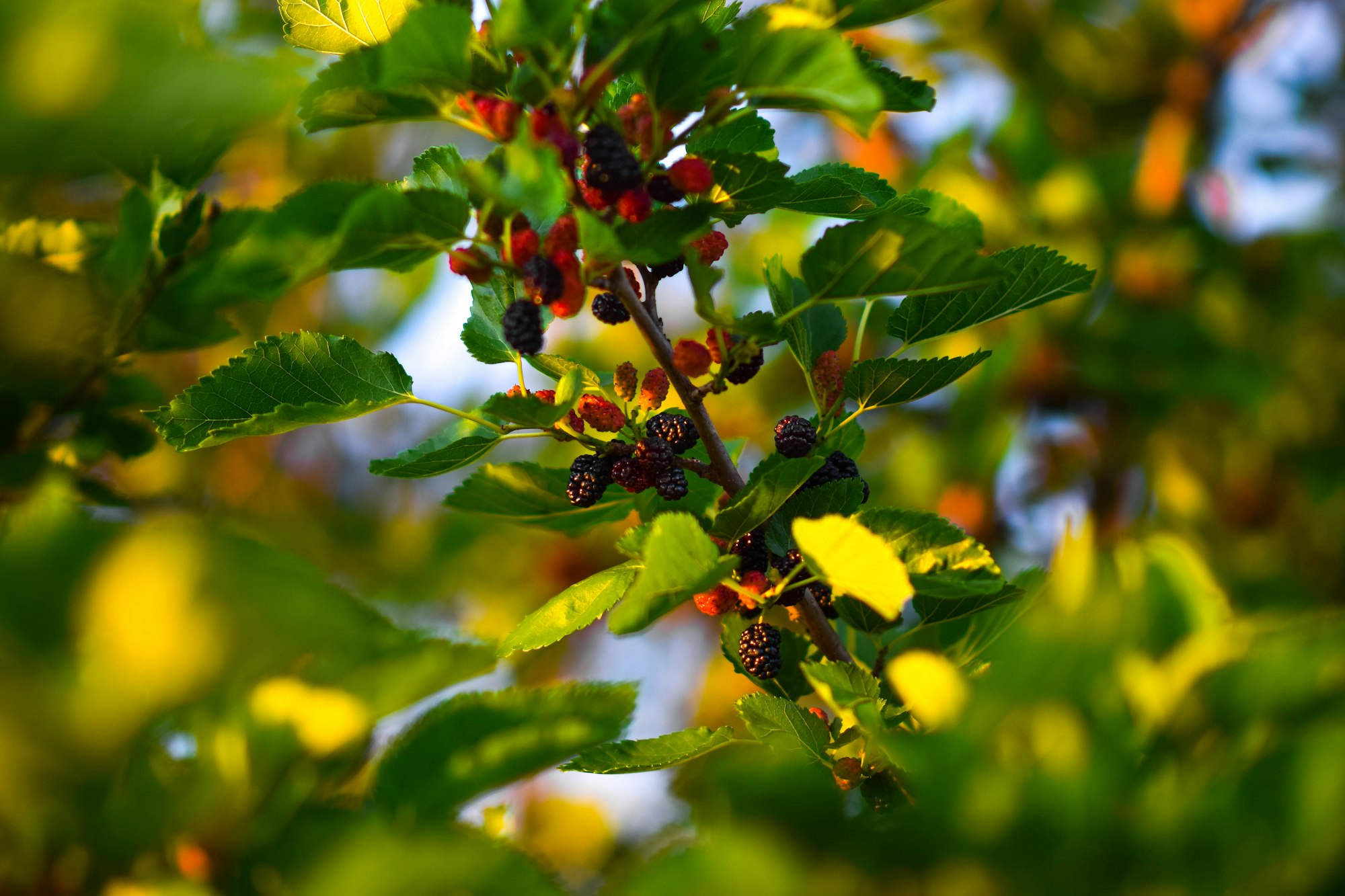How to Grow Mulberry
Growing mulberry trees can be a delightful addition to your garden, providing aesthetic appeal and delicious fruit. These medium-sized deciduous trees produce small, tasty berries similar to blackberries and are relatively easy to cultivate once established.

Table of Contents
To successfully grow a mulberry tree, it's essential to consider factors such as the suitable type of mulberry, appropriate planting conditions, and essential care practices.
This article will guide you through the process while offering valuable tips and insights to help you enjoy the bountiful rewards of your mulberry tree.
About Mulberry Plant
Mulberry trees are deciduous fruit native to North America and Asia, producing juicy, flavorful mulberries.
There are three main species: Morus alba (white mulberry), Morus rubra (red mulberry), and Morus nigra (black mulberry).
These trees thrive in well-drained, moist soil with full to partial sunlight and are most productive in temperatures between 68 and 86 degrees Fahrenheit.
You can easily grow and care for a mulberry tree, making it a great addition to your garden for a bountiful harvest.
Planting Mulberry Tree
To grow mulberry trees successfully, choose a planting site with rich, well-drained soil that receives full to partial sunlight.
The soil pH should be between 6.0 and 6.5 for optimal growth. Add compost to sandy soil if necessary to improve its fertility and moisture retention.
Mulberry trees can tolerate drought, but they prefer moist soil. Avoid selecting a location prone to standing water, which may harm the tree's roots.
Plant your mulberry tree in a hole twice as wide as the root ball and as deep as the container it came in. Gently tease the roots apart before placing the tree in the spot, ensuring that the top of the root ball is level with the surrounding soil.
Backfill the hole with soil, then water thoroughly to help the tree settle and eliminate air pockets.
After transplanting, add a layer of mulch around the tree's base to help retain moisture and regulate temperature.
Monitor the soil moisture regularly, particularly during the tree's first year, to ensure proper establishment.

Caring for Mulberry Plant
Sun and Temperature
Mulberry trees need full to partial sunlight and grow best in temperatures between 68 and 86 degrees Fahrenheit.
However, most varieties can tolerate temperatures as low as minus 25 degrees.
Water and Humidity
Keep the soil consistently moist during the growing season by watering your mulberry tree frequently.
These trees can handle periodical drought, but regular watering helps ensure optimal growth and fruit production.
Soil and Fertilizing
Plant your mulberry tree in well-drained, loamy soil with a pH between 5.5 to 7.0.
Add compost, peat, or sandy soil to improve soil fertility. Supply a balanced fertilizer during the growing season to promote healthy growth and fruiting.
Pruning and Propagation
Prune your mulberry tree by removing 8- to 12-inch-long branches with at least three buds during its normal pruning time.
To propagate, bury the cuttings completely in soil at 3 to 4 inches, preferably in June or July.
This method helps maintain a manageable size for the tree and encourages new growth for your future mulberry harvest.
Troubleshooting Plant Problems
Growing Problems
When growing mulberry trees, ensure they receive plenty of sun, as they prefer full sun to partial shade.
Ensure the soil is well-draining, as poor-draining soil can lead to root problems and inhibit growth.
If your mulberry tree has small or non-existent fruits, it might be due to insufficient watering. Properly water young trees, especially as established trees often tolerate drought better.
Pests and Diseases
Mulberry trees can be affected by pests like glassy-winged sharpshooters, which transmit a bacterium called Xylella fastidiosa, causing mulberry leaf scorch.
Unfortunately, there's no complete solution for getting rid of these pests.
Besides pests, diseases can also negatively affect your mulberry tree. Regularly inspect your tree for any signs of disease or infestation, and address issues as soon as they are detected to minimize damage and prevent spreading to other plants.
Conclusion
Mulberry trees thrive in full sun exposure, needing at least six hours of direct sunlight daily.
They can tolerate various soil types, including poor soil, and are drought-tolerant once established. To grow mulberry trees from seeds, soak the seeds in warm water for 24 hours before planting.
Remember to give sufficient space – 35-50ft apart for standard trees, 10-12ft for semi-dwarf trees, and 8ft for dwarf varieties.
By following these guidelines, you can successfully grow and maintain a mulberry tree, enjoying the delicious and versatile fruits it provides.
Remember to take care of any potential pests or diseases, and don't hesitate to prune the tree when necessary to promote healthy growth.
Frequently Asked Questions
What are the best conditions for mulberry tree growth?
Mulberry trees prefer well-draining soil rich in organic matter and can tolerate various soil types, such as clay, loam, and sandy soils.
The ideal pH range is between 6.0 and 7.0, so be sure to amend your soil with compost or well-rotted manure before planting.
When and how to prune a mulberry tree?
You should prune your mulberry tree during its dormancy period, typically in late winter or early spring. Remove dead, damaged, or diseased branches and any crossing branches to allow for proper air circulation and sunlight penetration for healthy growth.
Are there any common pests or diseases to watch out for?
Mulberry trees may be affected by pests such as whiteflies, scale insects, and fruit flies. Diseases to look for include powdery mildew, leaf spot, and fungal infections.
Monitor your tree regularly and treat any infestations or infections to maintain health.
Which varieties of mulberry trees are suitable for my region?
The California White variety is known for its sweet white fruit and drought tolerance, making it suitable for regions with sandy soils and mild climates.
To determine the best variety for your region, consult a local nursery or horticulturist for tailored advice.
How long does it take before a mulberry tree bears fruit?
Depending on the variety and environmental conditions, Mulberry trees can take two to eight years to begin fruit production. Be patient and provide proper care for your tree; you will eventually enjoy the fruits of your labor.


